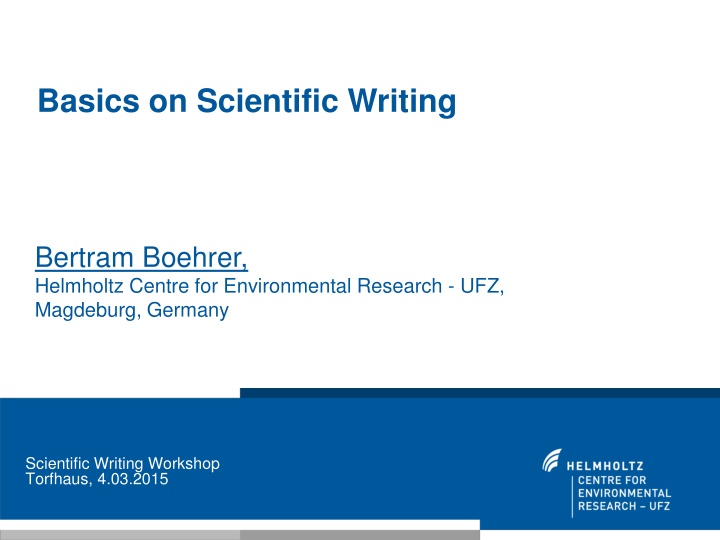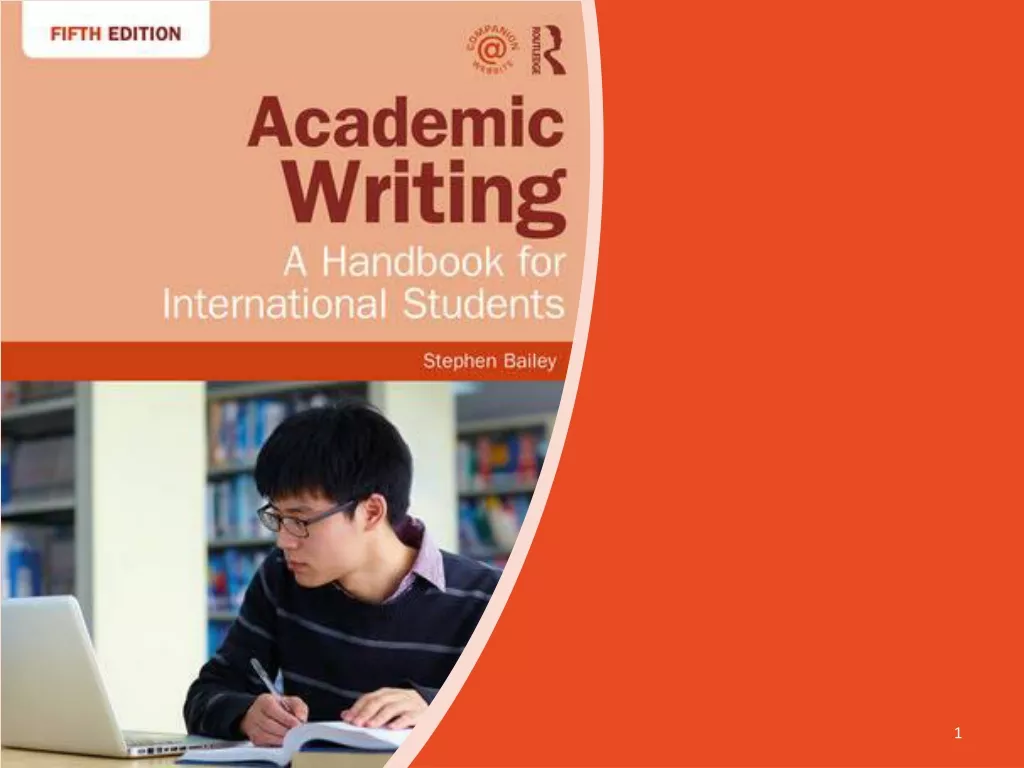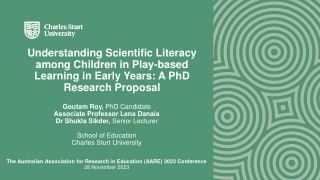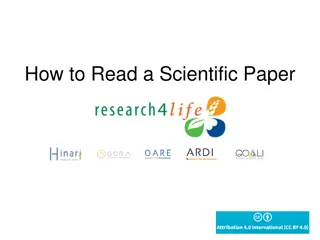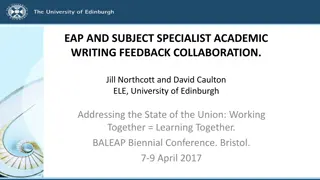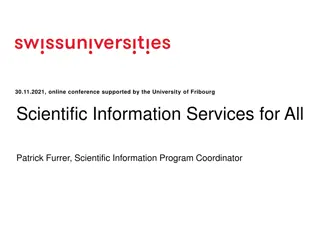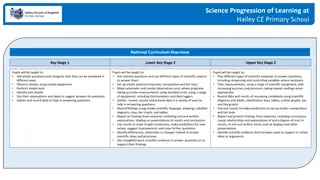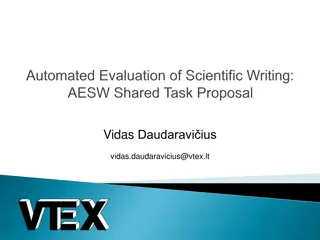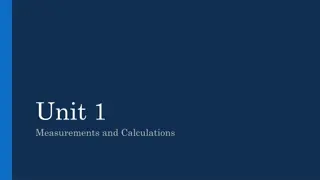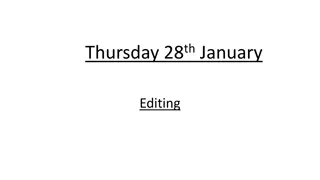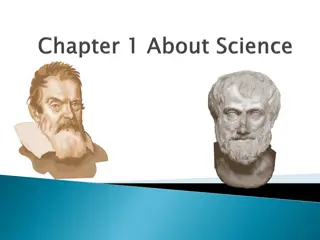Basics on Scientific Writing
Enhance your scientific writing skills with insights from Bertram Boehrer, a research expert from UFZ, at the Torfhaus workshop in 2015.
Download Presentation

Please find below an Image/Link to download the presentation.
The content on the website is provided AS IS for your information and personal use only. It may not be sold, licensed, or shared on other websites without obtaining consent from the author.If you encounter any issues during the download, it is possible that the publisher has removed the file from their server.
You are allowed to download the files provided on this website for personal or commercial use, subject to the condition that they are used lawfully. All files are the property of their respective owners.
The content on the website is provided AS IS for your information and personal use only. It may not be sold, licensed, or shared on other websites without obtaining consent from the author.
E N D
Presentation Transcript
Basics on Scientific Writing Bertram Boehrer, Helmholtz Centre for Environmental Research - UFZ, Magdeburg, Germany Scientific Writing Workshop Torfhaus, 4.03.2015
Expectations Do not expect too much interest from the reviewers Do not expect too much interest from the reader Be prepared for opposition Consequently: Write a simple style Keep parts of the paper legible (e.g. displays) Do not create opposition unnecessarily Page 2
English language (compared to German) Very rich vocabulary Strict sentence structure, limited grammatical tools Consequently: Be exact at choosing words (electronic dictionary) Choose scientific language Do not overstrain English grammar Page 3
Manuscript Text with line space Page numbers Separate paragraphs by blank lines Follow instructions for manuscript preparation Some journals now allow including figures in text Page 4
Text structure Present the contents in paragraphs Keep paragraphs at similar lengths Know what you want to communicate Page 5
Be positive Convey positive messages Write positive voice Do not write about failures Pretend you knew everything up-front Page 6
Omit Omit unnecessary sentences Omit unnecessary words Remove the word very and similar nearly everywhere Page 7
Paragraph structure Each paragraph has a topic Communicate the topic in the first words Introduce the topic Communicate your points Close the paragraph Page 8
Sentences One sentence = one thought Communicate main contents in the main clause Keep the grammar simple Page 9
Tenses Use past tense (always or whenever possible) Add previous actions to - present tense in present perfect - past tense in past perfect May might ; can - could Page 10
Tenses Add previous actions to - present tense in present perfect -past tense in past perfect -You get a reaction, if you have added acid before -You got a reaction, if you had added acid before Page 11
Grammar Use strong verbs Do not care too much about repeating words Keep the grammar simple Page 12
Title This paper is about + title Central topic in the first two or three words Page 13
Abstract No paragraphs No numbers Page 14
Example to be improved Acrylamide is a maybe carcinogenic substance, which is used in the chemical industry and can be formed by Maillard-reaction in food. A study, done in Switzerland, examined how the chemical content of of the almonds and the temperature during preparation affected acrylamid formation in this foodstuff. A decreased temperature for preparation as well as employing almonds with modest amounts of unbound asparagine enabled a noteworthy decrease to be accomplished. Page 15
-ing form or to + infinitive The scope of this paper is . Sequence of adverbial constructions Ich war im letzten Jahr zweimal in M nchen I was in Munich twice last year Page 16
Commas Commas when necessary Adverbial constructions of more than one word at the beginning of the sentence need a comma If-clauses have a comma Relative clauses using which need commas (= relative clause is not required for main clause) No comma before that Page 17
Commas - examples My car, which I bought last year, is red. Only cars that are registered are allowed on the streets. Out of the blue, lake scientists demanded more money. Page 18
Reviewer Propose reviewers who may have an interest in the paper Include at least one paper of each expected / proposed reviewer. Write a manuscript that a renown expert of the field writes publish after a three hour flight. Page 19
Manuscript preparation Get a clear idea of the conclusion you want to communicate Only relevant data for these goals are included in the paper Get the figures ready in the final form Tell the story of the paper by presenting the figures to fellow students or the supervisor Page 20
Figure preparation Figures plus captions must be self-contained. (e.g. location of measurement, date, explain symbols) No interpretation in figure caption Include all necessary information, but nothing else Make sure the figure shows what you want to say One figure = one purpose; second purpose => second panel Page 21
Writing environment Choose days with few other obligations Create space on the desk Have all figures in correct sequence as print outs for guiding the writing and for possible annotations. Have pencil and pen ready. Open English dictionary (e.g. LEO) Close the Emailtool Page 22
Manuscript writing (for beginners) - Start with measuring site / methods - Results, discussion, conclusions - Then intro, abstract Do not let anything interrupt the flow of writing (no other tasks; missing figure: just type a rough caption; missing info include a comment for late fixing) Optimize intro again Go from figure to the next; Only items on display are followed by the reader Page 23
Timing for feed back - After deciding the topic of paper (working title) plus the data required (define who will be coauthor check with them) - After figure preparation (supervisor and fellow students) - After methods to conclusions (ask co-authors for required contributions) - complete manuscript - Before submission (all authors) Page 24
